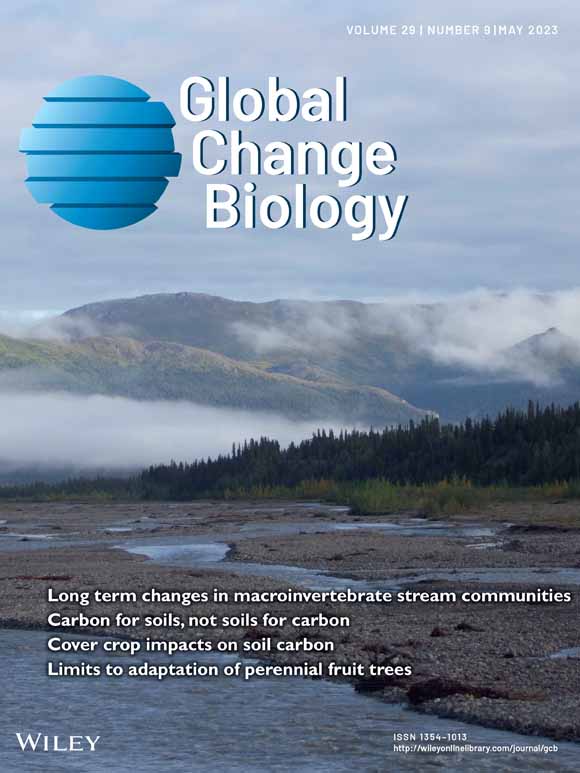Towards a common methodological framework for the sampling, extraction, and isotopic analysis of water in the Critical Zone to study vegetation water use
Quantifying the sources for plant water uptake and their dynamics is still a challenge in ecohydrology. As isotopic analyses becomes more widespread, common methodological frameworks are required. This paper provides guidelines for (1) sampling soil and plant material for isotopic analysis, (2) methods for laboratory or in situ water extraction, and (3) measurements of isotopic composition.
Assessing the impact of drought on water cycling in urban trees via in-situ isotopic monitoring of plant xylem water
The authors conducted innovative in-situ monitoring of stable water isotopes in plant xylem water over an entire growing period including a major drought to assess how urban trees react to changing water supply. They also detected fractionation in plant water. Urban trees rely on deep water supply and internal storage during drought.
Flexible foraging behaviour increases predator vulnerability to climate change
Based on a combination of (historical) empirical data and model simulations the authors investigated how size-selective adaptive behaviour under warmer conditions in demersal marine fishes might affect their long-term population stability. Under warmer conditions the fish species studied tend to consume less efficiently by choosing smaller and more abundant prey increasing their extinction risk.
Quantitative description of six fish species’ gut contents and prey abundances in the Baltic Sea (1968–1978)
This data paper presents a multi-year database containing information about diets and traits for demersal fish species from the Western Baltic Sea, as well as on resource abundances and environmental conditions. These historical data are unique as they provide detailed descriptions of quantitative and trait-based consumer-resource interactions enabling various ways of innovative food-web analyses.
The potential of historical spy-satellite imagery to support research in ecology and conservation
This study evaluated the spatial, temporal, and seasonal coverage of over one million declassified images from 4 US spy-satellite programmes, showing that this data spans nearly the entire globe and all seasons. Their use could lead to better mapping of the historical extent and structure of ecosystems and human impacts, and help reconstruct past habitats and species distributions.

Health risk ranking of antibiotic resistance genes in the Yangtze River
Aquatic microorganisms in China's Yangtze River are particularly resistant to many antibiotics, posing a high health risk.
Widely used herbicide metolachlor can promote harmful bloom formation by stimulating cyanobacterial growth and driving detrimental effects on their chytrid parasites
The study investigated the effects of the herbicide metolachlor on host-parasite interactions, using the host-parasite system of the toxigenic cyanobacterium Planktothrix agardhii and its chytrid parasite Rhizophydium megarrhizum. Metolachlor promoted cyanobacteria growth and caused multi and transgenerational detrimental effects on parasite fitness. However, these effects are reversible.
Reviving Europe's rivers: Seven challenges in the implementation of the Nature Restoration Law to restore free-flowing rivers
The authors identified potential challenges and ambiguities in the EU-NRL for restoring free-flowing rivers. They propose clear definitions of critical terms and the development of integrated assessment methods for prioritising actions to improve river connectivity as novel solutions to these challenges, contributing to the success of habitat restoration and biodiversity protection.

What factors influence the rediscovery of lost tetrapod species?
The authors created a database of lost and rediscovered tetrapod species (amphibians, reptiles, birds and mammals), identified patterns in their distribution and factors influencing rediscovery. Tetrapod species are being lost at a faster rate than they are being rediscovered, due to slowing rates of rediscovery for amphibians, birds and mammals, and rapid rates of loss for reptiles

Three hundred years of past and future changes for native fish species in the upper Danube River Basin—Historical flow alterations versus future climate change
The authors show that fish have been particularly sensitive to changes in flow regimes in the past, while higher temperatures will pose the greatest threat in the future. The threat assessment will remain at least as high in the future. However, it could probably be mitigated by reconnecting former floodplains and improving river connectivity.







